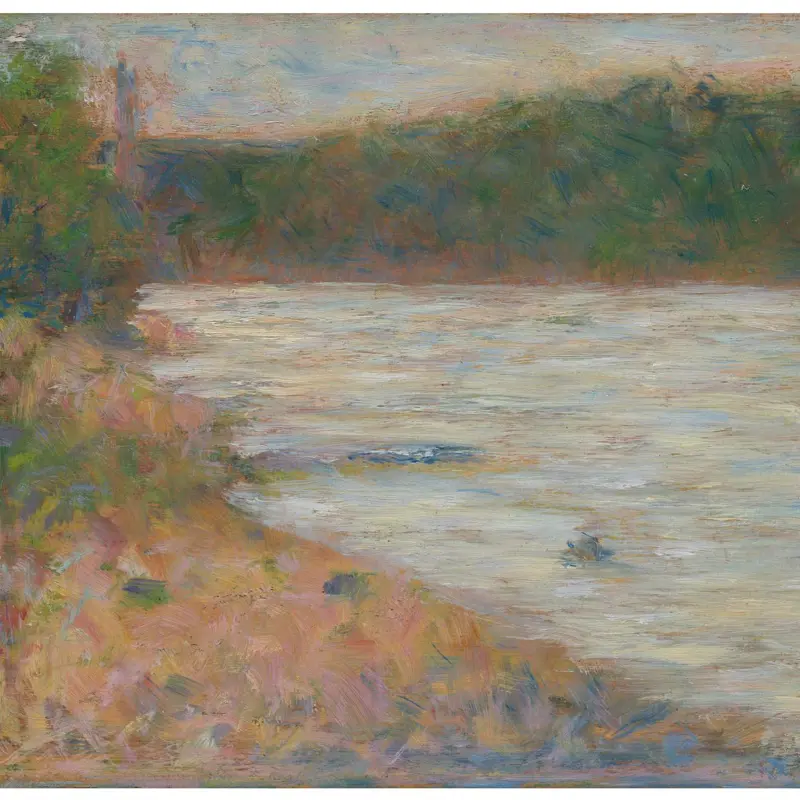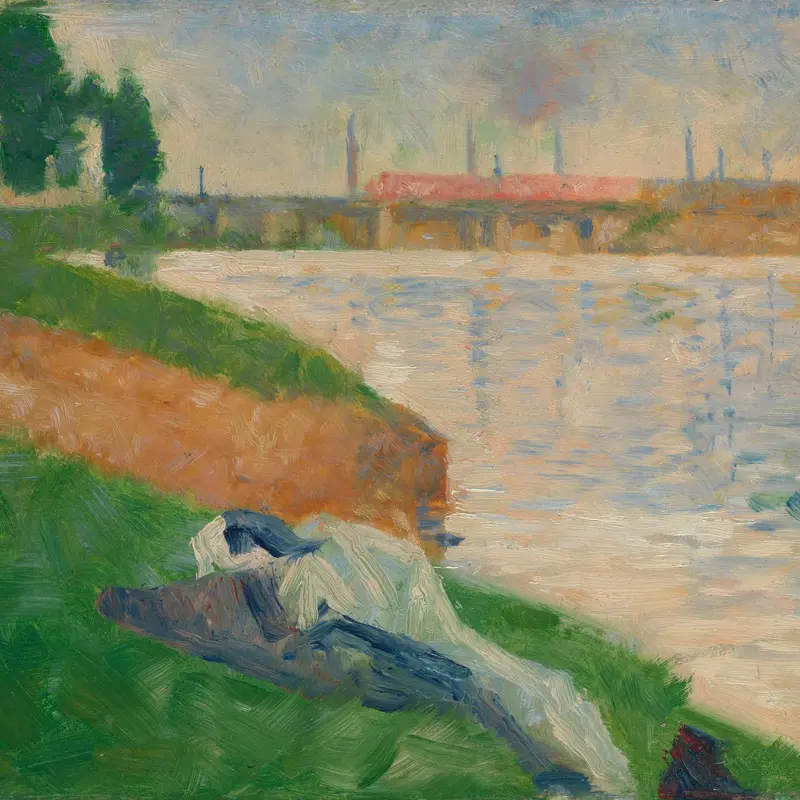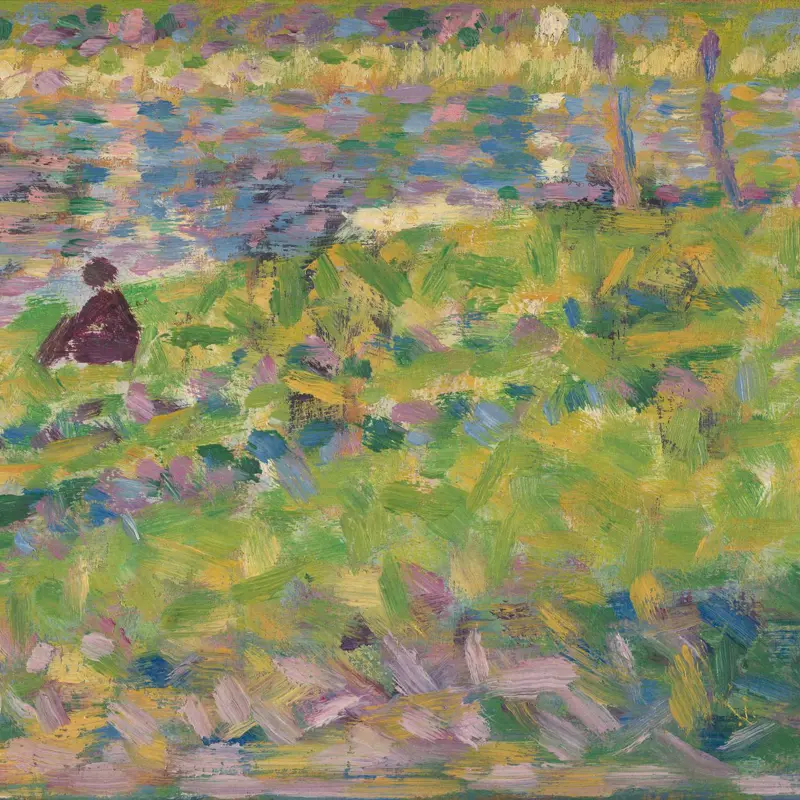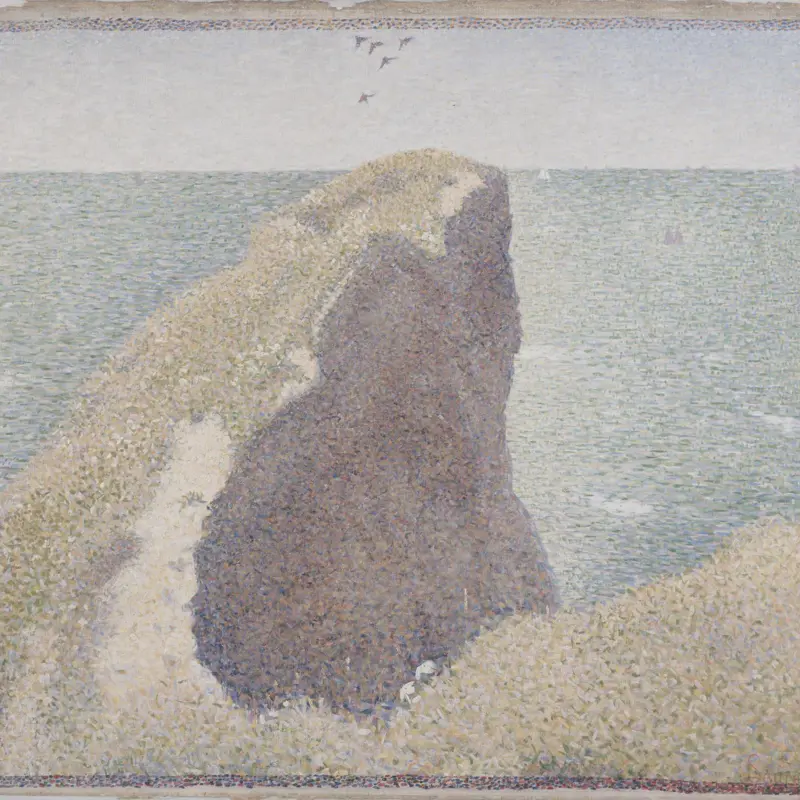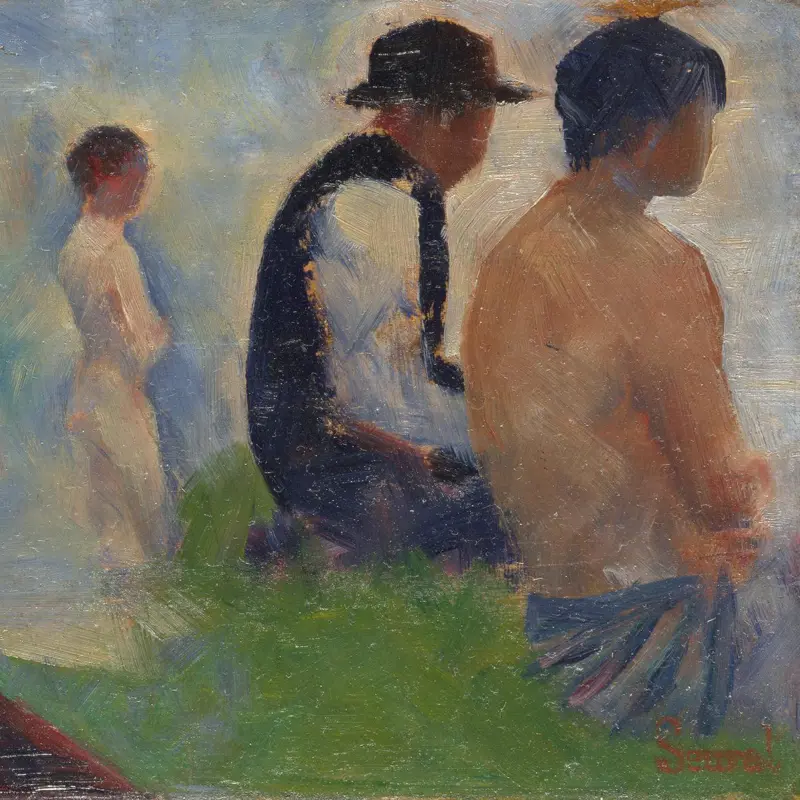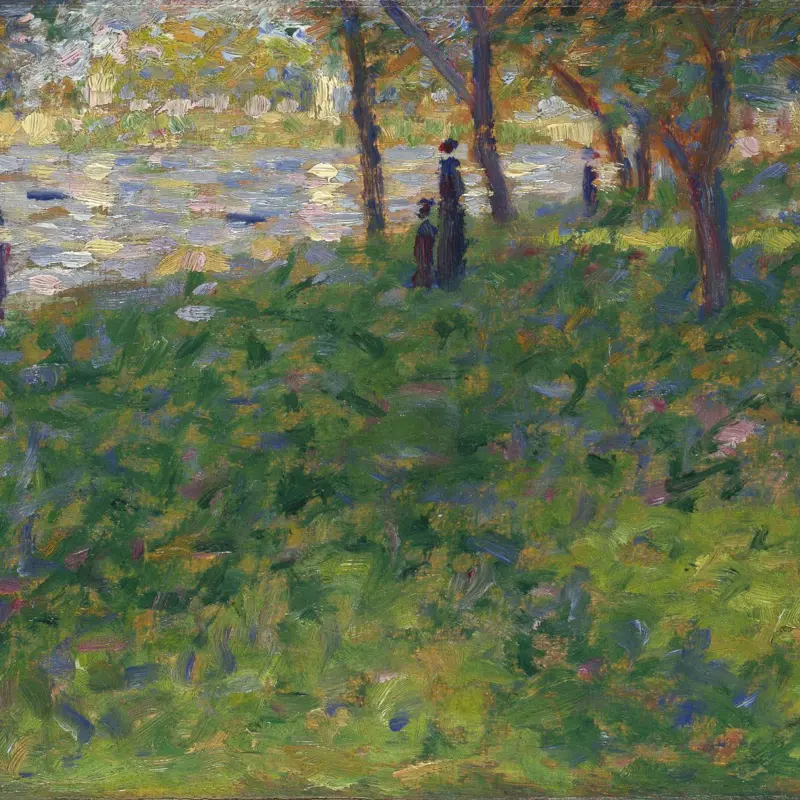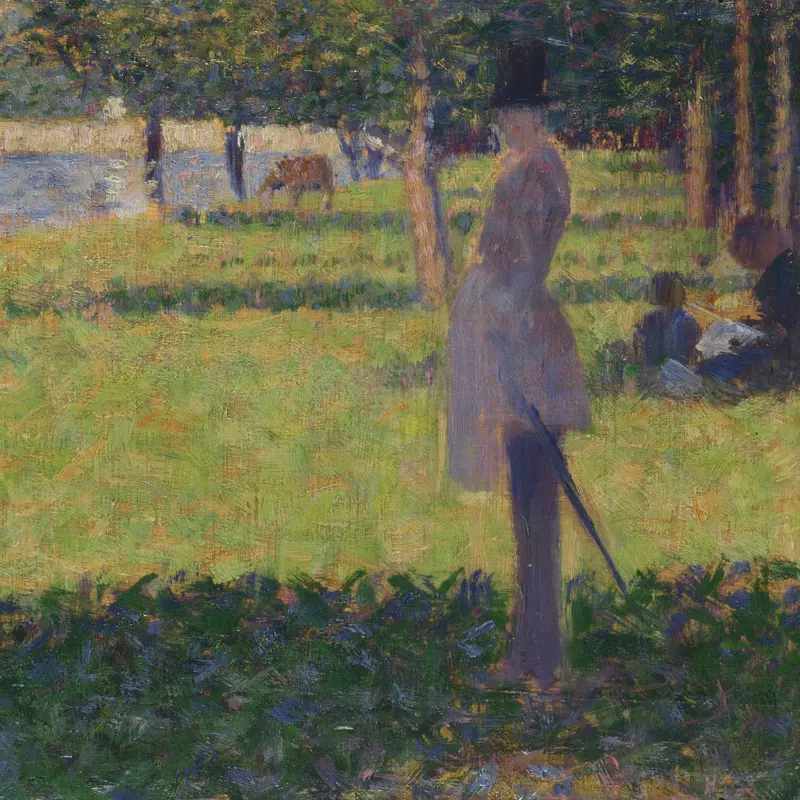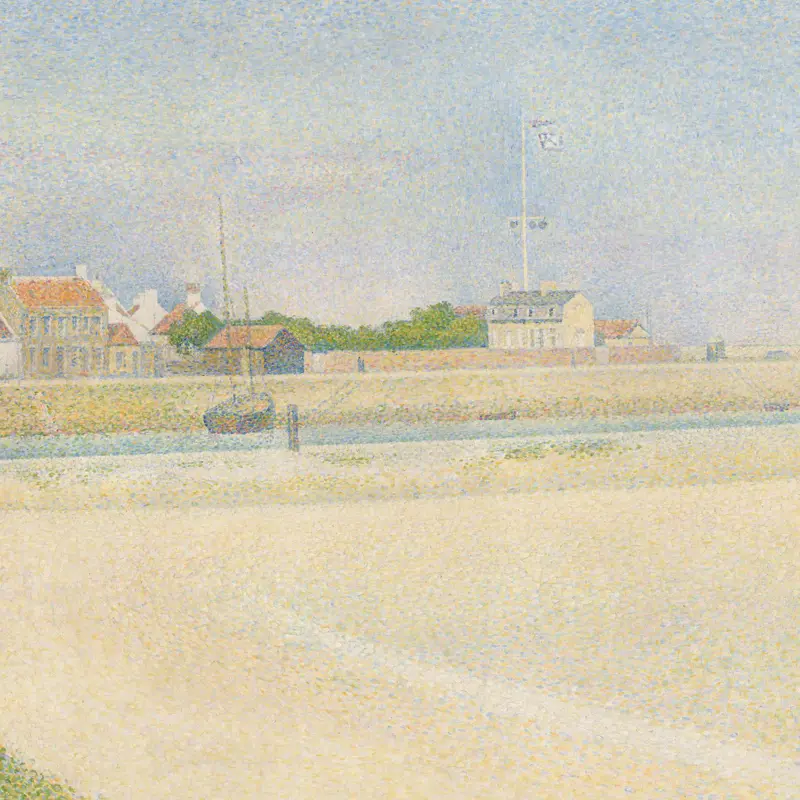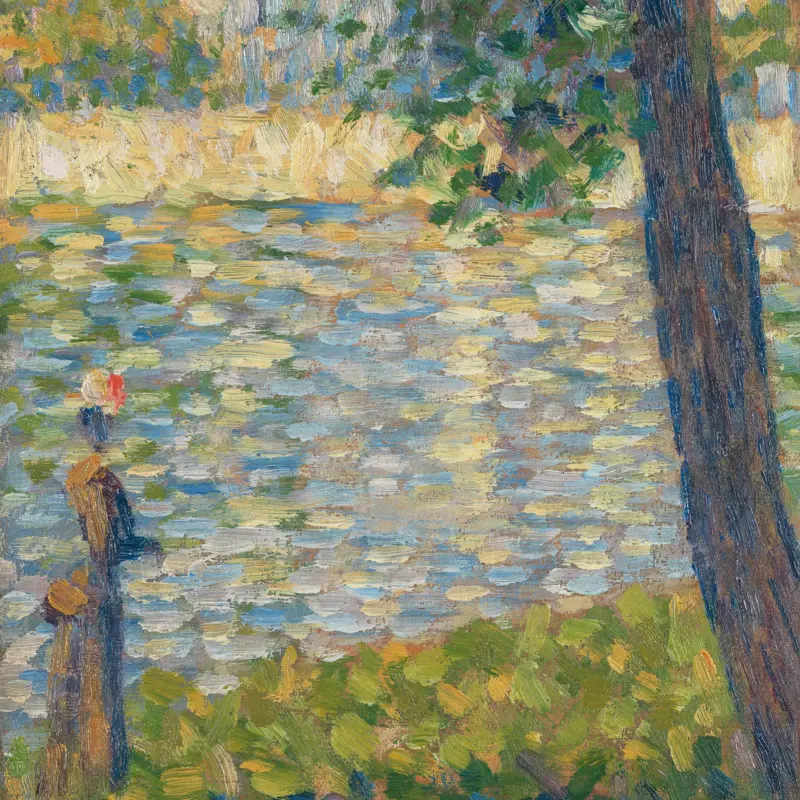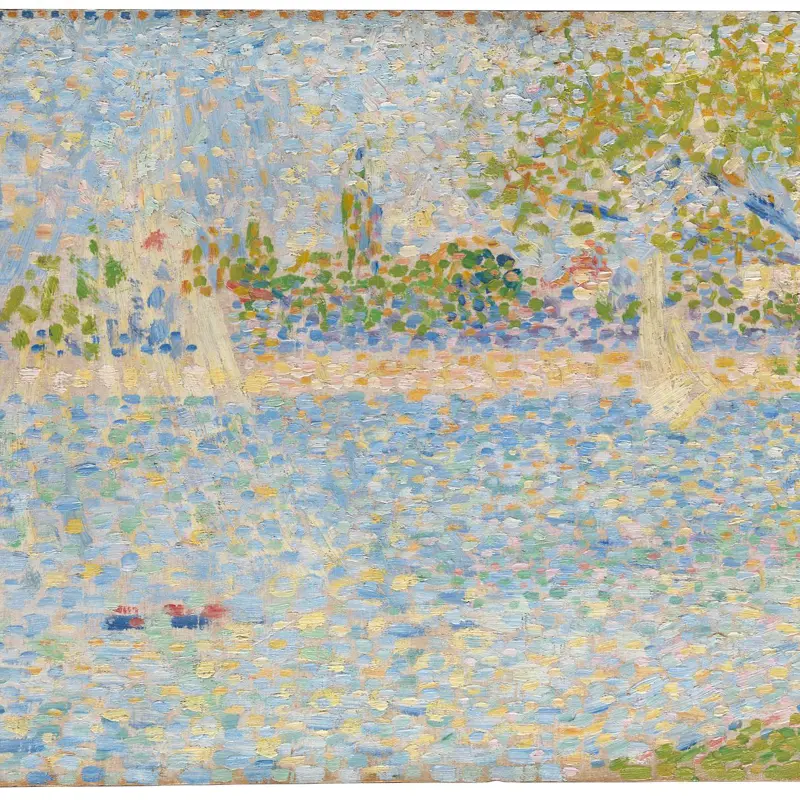Georges Seurat, 'The Rainbow: Study for 'Bathers at Asnières'', 1883
About the work
Overview
This is the only sketch for Seurat’s Bathers at Asnières that includes a rainbow, which was painted over the sky once the paint had dried. Although perhaps a rather contrived image, the mottled sky suggests Seurat may have seen a rainbow. It is evidence of his attention to particular effects of light and atmosphere throughout the sketches – and in the final painting, with its effect of hazy morning sunshine.
The picture looks as though it was at least partly painted on site, rather than in the studio. For example, the black barges on the right and building in the background, depicted with just a few swift strokes, may have been painted directly on location. However, this is more developed than a quick sketch as it shows signs of having been composed rather than simply observed. The three figures have been deliberately placed with equal space between them.
Key facts
Details
- Full title
- The Rainbow: Study for 'Bathers at Asnières'
- Artist
- Georges Seurat
- Artist dates
- 1859 - 1891
- Date made
- 1883
- Medium and support
- Oil on wood
- Dimensions
- 15.5 × 24.5 cm
- Inscription summary
- Signed
- Acquisition credit
- Presented by Heinz Berggruen, 1995
- Inventory number
- NG6555
- Location
- Room 44
- Collection
- Main Collection
Provenance
Additional information
Text extracted from the National Gallery’s Annual Report, ‘The National Gallery Report: April 1995 – March 1996’ and supplemented by Isobel Muir.
Exhibition history
-
2009Georges Seurat: Figure in SpaceKunsthaus Zürich2 October 2009 - 17 January 2010Schirn Kunsthalle Frankfurt4 February 2010 - 9 May 2010
-
2010Bridget Riley: Paintings and Related WorkThe National Gallery (London)24 November 2010 - 22 May 2011
-
2013Normandie ImpressionnisteMusée des Beaux-Arts (Caen)27 April 2013 - 29 September 2013
-
2019Impressionism in the Age of Industry: Monet, Pissarro and moreArt Gallery of Ontario16 February 2019 - 5 May 2019
Bibliography
-
1926Lefèvre Galleries, Pictures and Drawings by Georges Seurat, London 1926
-
1941B. Nicolson, 'La Baignade', The Burlington Magazine, LXXIX/464, 1941
-
1946D. Cooper, Une Baignade, Asnières in the Tate Gallery, London 1946
-
1949Knoedler Gallery, Seurat, 1859-1891: Paintings and Drawings, New York 1949
-
1959H. Dorra and J. Rewald, Seurat: L'oeuvre peint; biographie et catalogue critique, Paris 1959
-
1961C. de Hauke, Seurat et son oeuvre, Paris 1961
-
1990A. Madeleine-Perdrillat, Seurat, New York 1990
-
1991R.L. Herbert, Seurat (exh. cat. Galeries Nationales du Grand Palais, 9 April - 12 August 1991; Metropolitan Museum of Art, 24 September 1991 - 12 January 1992), Paris 1991
-
1991R. Kendall, Van Gogh to Picasso: The Berggruen Collection at the National Gallery (exh. cat. The National Gallery, 16 January - 21 April 1991), London 1991
-
1996National Gallery, The National Gallery Report: April 1995 - March 1996, London 1996
-
1997P. Smith, Seurat and the Avant-Garde, New Haven 1997
-
1997J. Leighton and R. Thomson, Seurat and the Bathers, (exh. cat. The National Gallery, 2 July - 28 September 1997), London 1997
-
2001
C. Baker and T. Henry, The National Gallery: Complete Illustrated Catalogue, London 2001
About this record
If you know more about this work or have spotted an error, please contact us. Please note that exhibition histories are listed from 2009 onwards. Bibliographies may not be complete; more comprehensive information is available in the National Gallery Library.

